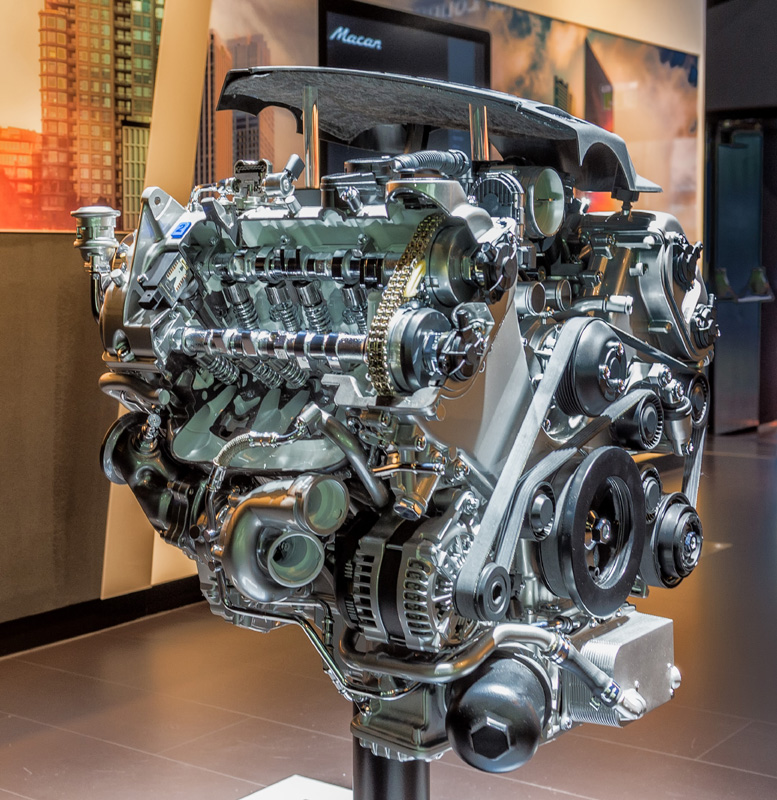
Engines that the Porsche Macan uses have big story behind it. The future Audi cars may share something common with Porsche regarding these engines.
Currently there are two petro engines for the Porsche Macan: a 3.0L and a 3.6L, both are twin-turbocharged. These two engines have the same bore size (96mm), but different stroke (3.0L is 69mm, 3.6L is 83mm). Because of the smaller bore/stroke ratio, the 3.0L engine is more suitable for high revving purpose.
The 3.0L engine plays an important role in global market because many countries have heavy tax regulations on large displacement engines. By using the 3.0L engine, Porsche is able to lower its products’ prices significantly in many countires.
Here comes another question: in US there is no tax penalty for engine displacement, but why the Panamera S/4S still do not use the 3.6L twin turbo engine, and keep using the 3.0L engine instead?
There are many answers for this question, but from my opinion it is mainly due to the fact that, VW wants to balance the factory productivity for different engines. The 3.0L engine need enough order volume to make a valid business case. On the other hand, the 3.6L engine already has lots of applications, for example the base Panamera is using the naturally aspirated version, and the brand’s best selling model Cayenne, is also using the 3.6L engine too; and in the future it will keep using this same engine too.
The following photo is the 3.6L turbo engine used in the Macan Turbo.
From recent trends of the VW Group’s product line, I have a sense that they are consolidating their designs and technologies, increasing product sharing between different brands. The Porsche Macan is the best example – it is the first Porsche model that has a front-wheel-drive layout design (because it is sharing the same platform as Audi Q5), which places the engine 100% in front of the front axle, and thus has a significantly heavier nose. Porsche could have used an aluminum made front subframe to enhance the Macan’s front/rear weight distribution, but Porsche chose not to do it, keeping the Q5’s steel subframe. This does not look like Porsche’s style, but it does happened, so it is highly possible due to VW’s current consolidation effort.




Recent Comments